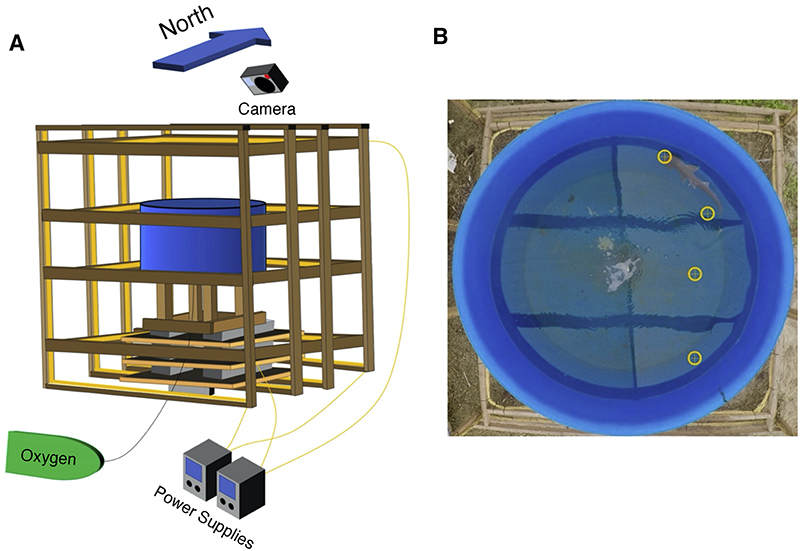How do marine migrants navigate?
The earth’s magnetic field is pretty much the only constant and ubiquitous navigation aid that’s available to marine migrants for navigation. Magnetic-based navigation is pretty common amongst marine migrants and there is substantial evidence that elastomer brakes are sensitive to geomagnetic fields but until now it has been undissolved that sharks use this ability for orientation navigation. This is a really interesting question because sharks routinely undergo long-distance migration between the same location.
The magnetic fields vary predictably on a gradient so together those factors can be really useful for animals formulating a magnetic map and can assist them with navigation.
Sharks are sensitive to electromagnetic fields, so researchers conducted an experiment on 20 juvenile bonnethead sharks by capturing them in the wild and placed individually inside a circular pool. By stimulating and modifying the magnetic cues around the pool reachers noticed that they had an effect on the swimming direction of the shark. The Bonnethead sharks actually appeared to use magnetic fields to tell in which direction the house was.
“How cool is it that a shark can swim 20,000 kilometers round trip in a three-dimensional ocean and get back to the same site?” says Keller. “It really is mind-blowing. In a world where people use GPS to navigate almost everywhere, this ability is truly remarkable.”

The Bonnetheads were exposed to the magnetic field that replicated conditions both a long way north and a long way south from their home. In the south configuration, the shark showed a desire to travel north.
Sharks showed no preference for swimming in a particular direction when the magnetic field in the tank matched the magnetic field at the location where the shark was caught. Sharks felt as if they had returned to their home. This study matched the team’s hypothesis. When sharks were exposed to the north configuration, they did the same thing.
Researchers suggest that because sharks had never experienced a magnetic field configuration in this way – in other words, they only respond to environments they have learned from their travels, rather than any magnetic field on Earth From reading. To confirm this they need to do more researches.
The bonnethead actually exhibits site fidelity so the return to the same estuaries on a seasonal basis and this is important to show that a shark has a preferred habitat. they are capable of successfully navigating back to that location.
What happens to these young bonnethead sharks is likely to apply to other types of shark species as well. Well, the author studying the great white traveling between South Africa and Australia in a year, is a perfect example for this.
There is a great possibility that Earth’s magnetic field affects the location of shark populations and the genetics of those communities. Sharks are not the only creatures to get around this way, as sea turtles also rely on magnetic signatures to return to beaches, where they sometimes cover vast distances similar to sharks.
Tests Researcher want to perform further:
- The reaction of the sharks to magnetic fields from man-made objects.
- How these areas affect the lives of everyday sharks.
“To be honest, I am surprised it worked,” says Keller. “The reason this question has been withstanding for 50 years is because sharks are difficult to study”.

3 Comments
Pingback: New Auroral Phenomena that was Hidden in 19-Year-Old Video Footage, Discovered by Scientists - Craffic
Pingback: New Dark Matter Map Shows 'Hidden Bridges' that Connect Milky Way And Nearby Galaxies - Craffic
Pingback: Scientists create World's Thinnest Magnet that is just a single atom thick - Craffic